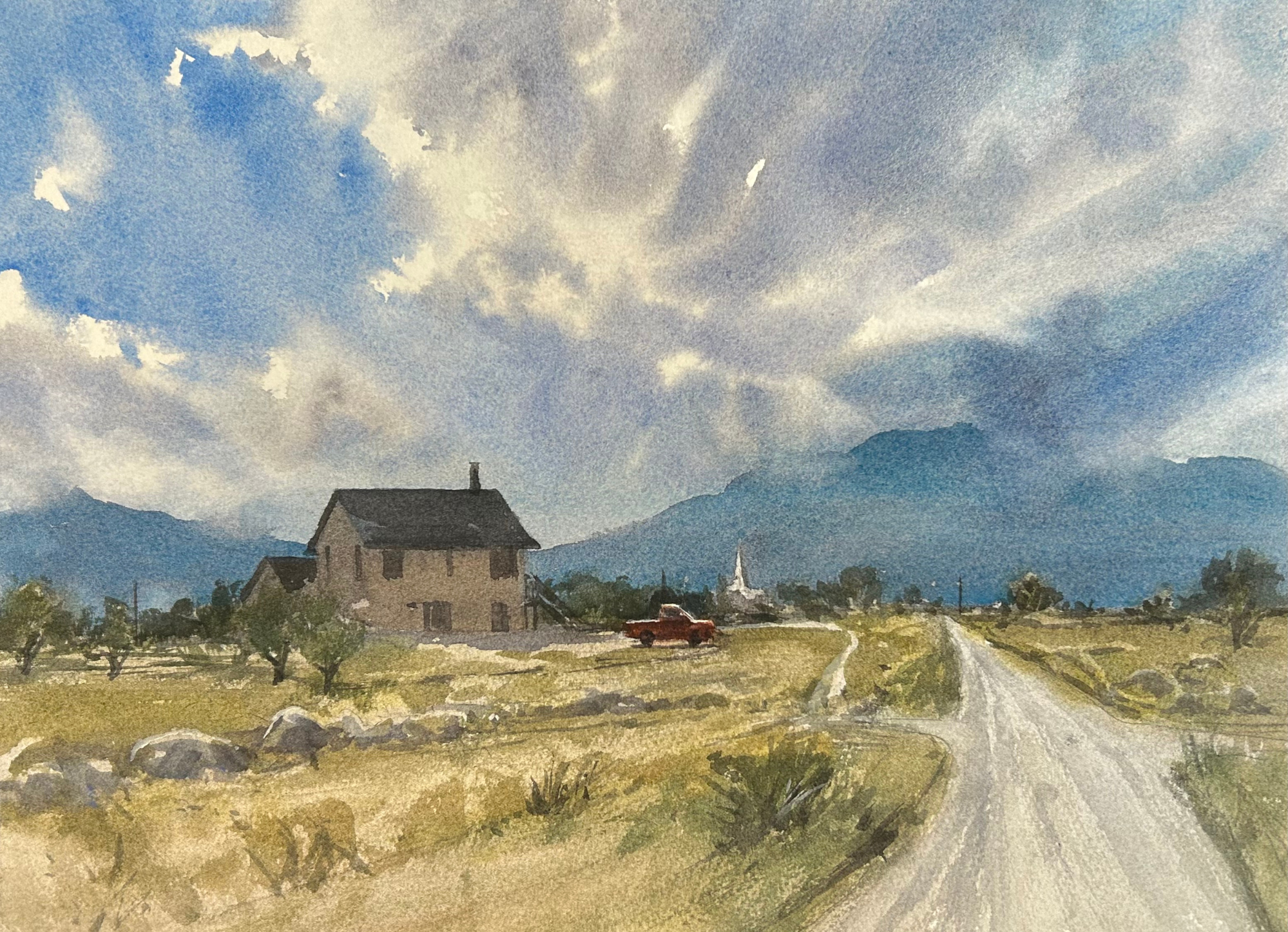How To Depict Sweeping Distances With Watercolor - 3 Concrete Tips
Nov 17, 2025It almost feels like magic when you're able to create an illusion of distance on a thin sheet of paper. And when you're working on a scene that spans miles and miles, you've got to use every tool and strategy you have.
Today, I'm going to let you in on 3 techniques I use to depict sweeping distances.
What is Depth in Watercolor?
Creating this distance can also be referred to as creating depth. But what do I mean by depth in watercolor?
Depth in a painting is the illusion of a three-dimensional space on a two-dimensional surface created by a perception of space between the foreground, middle ground, and background.
Today I am going to share the techniques I use most frequently to accentuate the distance in a watercolor scene.
Painting Distance That Spans Miles
1. Soften Distances
Notice how soft and nondescript the background of this painting is. You can see a vague line near the horizon that gives the impression of a hill, but even that is obscured with soft brush marks.
These soft edges, paired with harder edges in the middle and foreground) create this sense of distance.

It's a simple concept - details are clearer to you the closer you are to them. But sometimes we become too interested in depicting the detail than we are in capturing the wide expanse of the scene.
2. Use Color Temperature to Your Advantage
Another useful tool we have to create depth is color temperature: warm colors and cool colors.
As a general rule, cooler colors feel further away and warmer colors feel closer up.
The blue of the mountains in this scene helps them recede from the rest of the scene in a way that they wouldn't if they were a warmer color.

What is the difference between a cool color and a warm color?
Cool colors are blues, greens, purples and hybrids of these colors.
Warm colors are reds, yellows, and oranges.
The identification of a color as warm or cool gets more complex when, say, blue and yellow are mixed. This can take some time to get your head around if color theory is new to you. Here is a more thorough explanation of it that should help if you are struggling with the concept.
3. Use Texture Strategically
The last tip to create depth and distance in your scene is to be intentional about where you add texture to your painting.
What is texture?
Texture is created with dry brush marks, hard edges, shading, and/or lots of color variation. In the painting below, there is texture in the foliage, texture where there's movement in the water, and texture in the light and dark side of that main tree.

Texture brings an object forward in a scene. Notice the difference between the foreground of this painting and the background. I have included significant amounts of texture in the foreground, and taken out some in the background. If I had added all the texture I could perceive with my naked eye in the background, this scene wouldn't read right.
If the background is competing with the focal point in the foreground, you'll end up with a confused, unfocused painting. It's the contrast that makes the distance apparent.
Use These Strategies to Paint Sprawling Scenes
These three tips on creating distance in your paintings can be applied to scenes that span miles, but they also apply to scenes that cover a much smaller expanse. I hope you keep these tricks in your back pocket the next time you go to paint a landscape, a cityscape, or even an interior.
Related Blogs
How to Use Cool and Warm Colors to Depict Distance
Top Watercolor Techniques to Create Depth in a Painting
Creating Depth and Realism: Essential Strategies for Watercolor Landscape Artists
